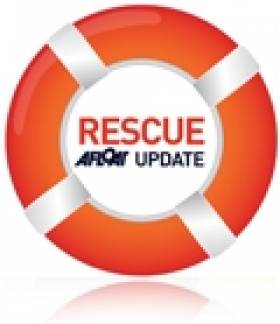Displaying items by tag: Groomsport
Discover the Maritime History of Groomsport with New Self-Guided Walking Tour Map
Groomsport is a small village on the North Down coast about two miles east of Bangor but in no way overshadowed by the larger town. It and its inhabitants have always had strong maritime links.
The original Gaelic name for the village, Port an Ghiolla Ghruama means Gloomfellow Port and the Irish has been half-anglicised as Gilgroomsport. The port was, before the 17th century, the main point of embarkation for Scotland until nearby Donaghadee was developed as the mail packet route across the North Channel to Portpatrick on the Mull of Galloway.
All this history and more is now available as a self-guided walking tour using the tour map recently launched by Discover Groomsport, a charity focussing on the history and heritage of the village. The substantial interest in the village has been demonstrated by the fully booked guided walking tours held weekly in July and August.
 A self-guided walking tour using a tour map launched by Discover Groomsport
A self-guided walking tour using a tour map launched by Discover Groomsport
Groomsport was the departure point of the ship Eagle Wing, which carried Presbyterians seeking religious freedom, the first attempt by Ulster-Scots / Scotch Irish folk to get to America. 140 men, women, and children were aboard the ship, which had to turn back after eight weeks at sea due to bad weather. By the mid-19th century, Groomsport had a relatively large fishing fleet and housed a lifeboat station in its sheltered bay. The lifeboat station is now home to the Cockle Island Boat Club who run sailing races and events throughout the season.
The tour also includes important buildings in the village, such as the Coast Guard’s Watch House, the first lifeboat house in Belfast Lough and the fishermen’s cottages at Cockle Row.
The map and guide were designed by local artist, Dan Parsons, and it was printed with the help of a Heritage Project Grant from Ards and North Down Council. You can find it in a box outside the Cockle Row cottages at the Harbour and in the Tower House Visitor Information Centre in Bangor. It has a QR code linked to the website.
More information here
Council Advises Vigilance as Hemlock Water Dropwort Plant Washes up on Groomsport Beach
Ards and North Down Council has warned the public that Hemlock Water Dropwort, also known as ‘Poisonous Parsnip’ has washed up on Groomsport beach where it was seen and reported by a member of the public. Groomsport is about two miles east of Bangor on the North Down coast of Belfast Lough and it is thought that the recent stormy weather and tidal surges may have uprooted the plants, washing them ashore. It, therefore, has the potential to be found on or close to other beaches in the Borough.
The Hemlock Water-dropwort, also known as Dead Man's Fingers, is a flowering plant in the carrot family, native to the British Isles, Western Europe, and the Iberian Peninsula. All parts of the plant are extremely toxic and have been implicated in several cases of livestock poisoning. It can reach a height of 1.5m.
The term sardonic grin perfectly illustrates the deadly effect this plant has. It comes from the grisly practice in Phoenician Sardinia of disposing of criminals and old people using Hemlock Water Dropwort. It is said that the poison acts by constricting the muscles causing death by asphyxia which also causes a rictus like death grin, the sardonic grin.
The Council warns ” We would urge the public to be vigilant when walking along the beach particularly with young children and dogs as the poisonous roots can prove lethal if ingested. If the public were to come across the plant, we would advise avoiding contact.
We would particularly advise dog owners to keep a close eye on their pets when walking along our shores, making sure they don't eat anything they shouldn't. If you think your dog may have ingested “poisonous parsnip” it is advised to seek veterinary advice as soon as possible”.
Children Rescued From Co Down Waters
Four teenagers were rescued in Co Down last weekend when they were cut off by the tide, the News Letter reports.
The teens were caught up to their shoulders in water at Ardilea on Saturday evening when they were retrieved by a former volunteer coastguard who lives nearby.
The group were met at the shore by the South Down Coastguard Rescue Team and NI Ambulance Service paramedics and taken to hospital showing signs of hypothermia.
Meanwhile, on Friday night RNLI Bangor lifeboat rescued a young girl stranded on a rock near Groomsport after a call from a member of the public.
“With waves breaking around the knees of the frightened child it was paramount that she be brought ashore as quickly as possible," said a coastguard statement.
The girl was treated by waiting paramedics at the shore.





























































